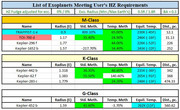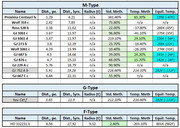That report was to show that the 10 exoplanets are not the best 10 choices I would use. Post #53 should be the better list, which shows distance for each.Helio, apologies if I am missing something, but I cannot see distance from Earth. My interest is possibility of communication, which is partly based on the time factor (2c turnaround of messages) . . . . . . but also, of course, on durability of possible civilisations (= temporal coincidence).
I tried to enhance the Excel program to list those that meet the equilibrium test only, but Excel says the program is now too large to compile. Anyone know how to get past this hiccup? [I can run a separate program if I have to.]
iPad





